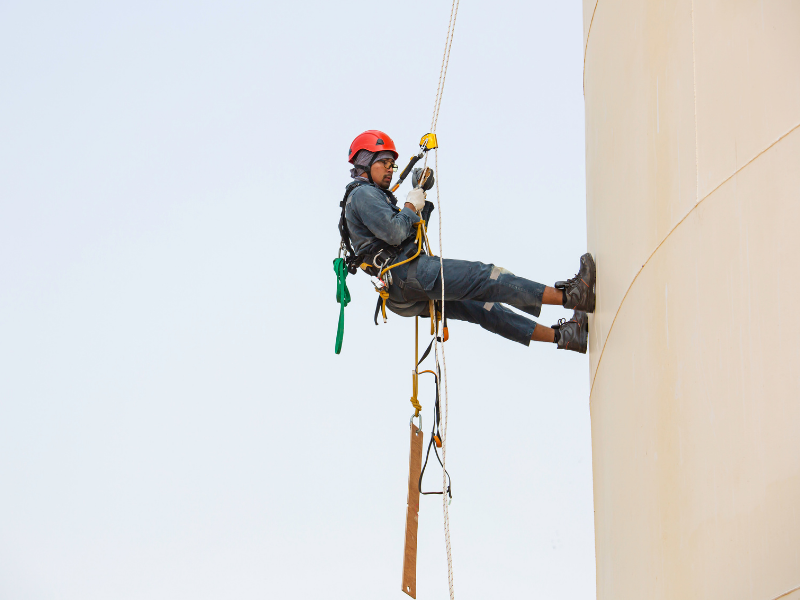home / news / Height Safety / The role of technology in advancing height safety practices
The role of technology in advancing height safety practices

Although technological advancement might not seem like an obvious advantage when it comes to working at heights, it does in fact play a crucial role in advancing height safety practices, helping to prevent injuries and accidents and making a significant contribution to improving safety standards.
In this month’s blog, the Kerrect team take a closer look at the ways in which technology has advanced and benefited height safety practices.
Fall protection systems
Technological advancements have led to the development of more comfortable and effective harnesses and lanyards, which are essential components of fall protection. In addition, the Internet of Things (IoT) technology has allowed for the deployment of sensors on equipment and structures, monitoring factors such as worker location and environmental conditions. Thanks to technology, we now also have accurate sensors and monitoring systems that provide real-time data to safety personnel, enabling workers to respond to potential hazards in a timely manner.
Believe it or not, virtual reality and augmented reality technologies are also used by height safety specialists these days, as they offer realistic simulation environments for training workers in height safety procedures, without actually exposing them to risks.
Drones
The use of drones when working at heights has also been greatly beneficial to the industry. Equipped with cameras and sensors, drones are able to perform safety inspections of structures and equipment at heights, reducing the need for workers to physically access dangerous areas and identifying any potential hazards they need to be aware of.
Mobile Apps and Software
There is a now a great range of safety apps available that provide access to safety guidelines, checklists, and emergency response procedures, all simply through your mobile phone! A variety of software solutions also help height safety workers document safety inspections, track equipment maintenance and generate accurate and timely compliance reports.
Communication Systems
Gone are the days of the crackling walkie-talkies, advancements to two-way radios and wireless communication devices, have enhanced coordination and quick responses in emergency situations. This has ensured that all height safety workers can communicate effectively and rapidly, even at great heights.
Advanced Materials
Although it seems trivial, it’s also important to consider the technological advancements in regards to materials used by height safety workers. Lightweight and durable materials, such as advanced alloys and composites, have improved the design and construction of safety equipment like ladders, scaffolding, and platforms, making working at great heights safer than ever before.
Want to know more? Contact Kerrect today
It’s no surprise that technology’s role in height safety practices is continually evolving, with ongoing research and development efforts aimed at enhancing safety, reducing accidents, and improving overall efficiency in our industry, where working at heights is common.
The team at Kerrect believe incorporating these technological advancements into safety protocols and practices is essential for preventing accidents in elevated work environments. If you’d like more information regarding technological advancements in the heights safety industry, or have any questions regarding height safety operations, contact Kerrect today.